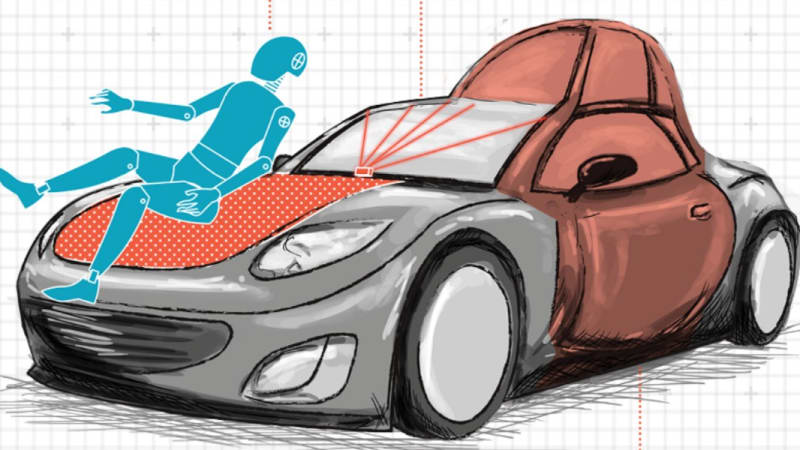Automakers actually patented these oddball car features
https://ift.tt/2xixsw8

Patent filings shed light on what goes on inside an automaker’s research and development department. They sometimes preview things we’ll see in the coming months, like Mazda’s straight-six, but some of the more fascinating ones outline features engineers invented and left on the drawing board for various reasons.
British van leasing firm Vanarama rummaged through patent offices to find some of the oddest patents filed but never brought to production, and it cleverly illustrated its findings, some of which are shown above. Unsurprisingly, many outline ways to make cars safer, cleaner, or both. In 2012, for example, an engineer named Peter W. Ripley patented a roof-mounted turbine system that promised to power an electric vehicle using wind energy. It could work, it’s clever, but it hasn’t been built yet.
Toyota envisioned a retractable, telescopic tail in 2016 that presumably extended as the car accelerated to improve its aerodynamic profile and improve fuel economy. Two years earlier, its vehicle development team experimented with what it referred to as an aerocar that’s exactly what it sounds like: a car that turns into a plane. “Shape-morphing fuselage transitions from land mode to flight mode,” the Japanese company explained.
Google wanted to glue you to a car’s hood in the name of safety. In 2013, it reasoned pedestrians stood a better chance of surviving getting hit by a car if they stayed glued to it. This quest for maximum safety led Uber Advanced Technology Center (Uatc) to design a camera that lets autonomous vehicles communicate with pedestrians by projecting messages onto the road surface. This is a feature we’ll likely see in the coming years; Mercedes-Benz has experimented with it.
And then, there’s the plain weird, like an in-car partition parents can position between unruly kids, a drone-powered car-wash that escaped from BMW’s headquarters, in-car conveyor belts masterminded by Ford, and Tesla-developed laser window washers that blast debris off a windshield. Ford also imagined a small, scooter-like two-wheeler that fits inside a car, a solution that reminds us of the folding Motocompo sold by Honda between 1981 and 1983. It was so small that users could carry it in the 133-inch long first-generation Fit.
Some features reach production decades after they’re described in patents. Phillip H. English described an in-car coffee machine in 1991, and there are several on-the-go espresso brewers available from a variety of online vendors in 2020. 1998’s in-car urine reservoir system hasn’t landed yet, unless you call it an empty bottle.
Make sure to check out all of Vanarama’s excellent illustrations on its site.
Related Video:
Auto Blog
via Autoblog https://ift.tt/1afPJWx
March 23, 2020 at 06:42PM
